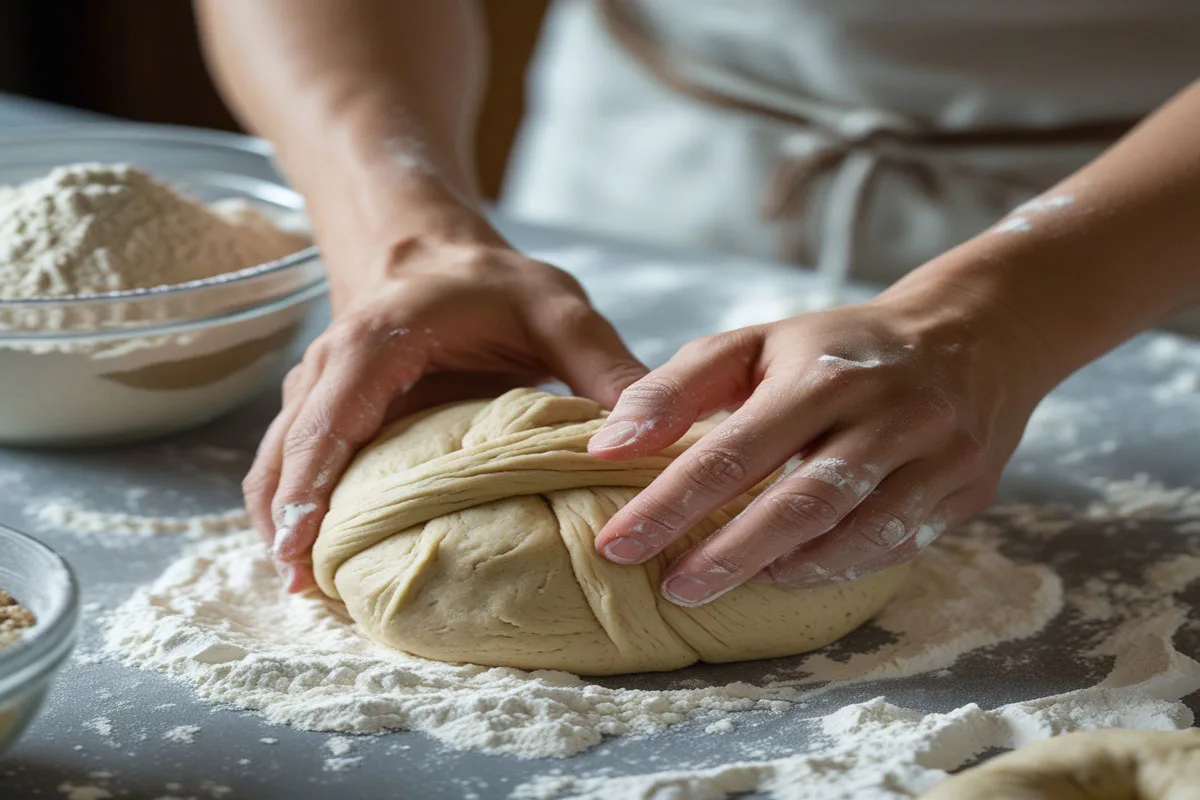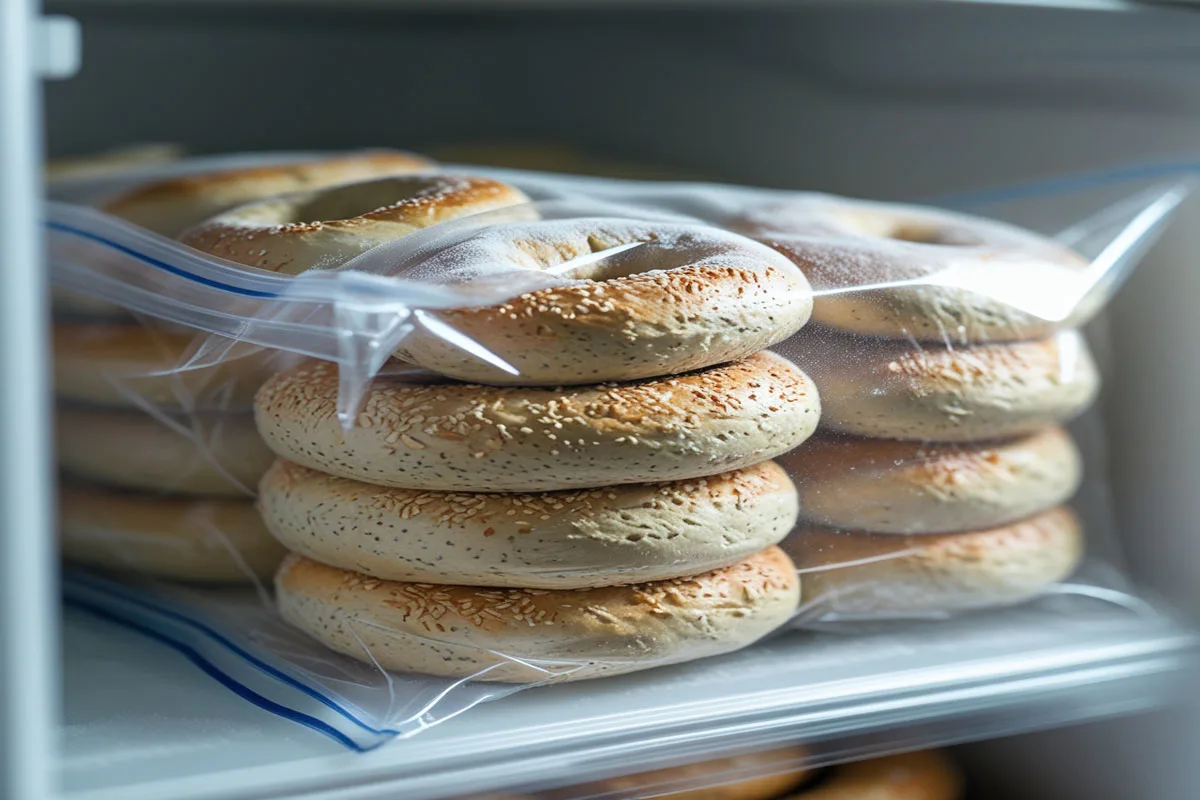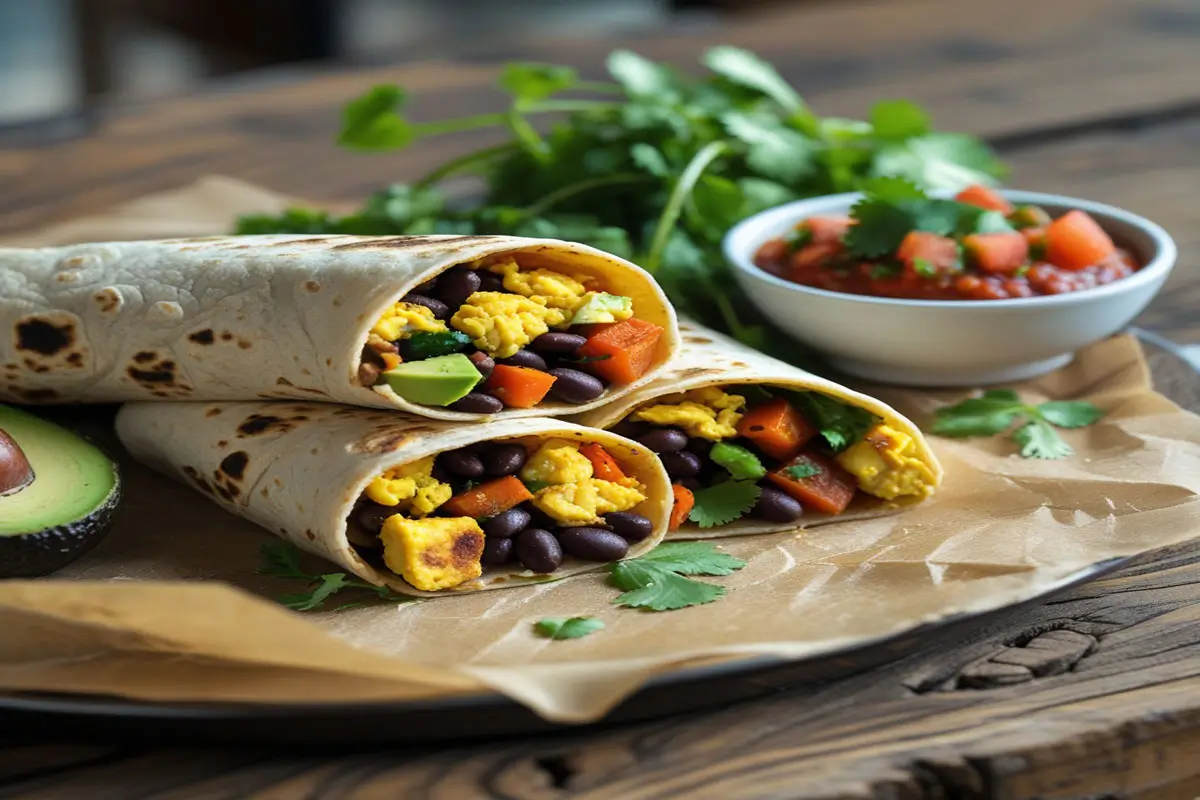Gluten-free bagels are a fantastic choice for individuals who have sensitivities to gluten or those who prefer to eliminate gluten from their diet for various health reasons. Choosing gluten free bagels can bring several health benefits, such as better digestion, improved energy levels, and reduced inflammation. More importantly, these bagels offer a delicious option for breakfast or a snack that everyone in the family can enjoy.
As the demand for gluten-free products continues to grow, many bakeries and home bakers are perfecting their recipes to create bagels that are just as tasty as their traditional counterparts. This makes gluten-free bagels an ideal option for those looking for a healthier or more inclusive alternative.
In the next sections, we’ll explore why gluten-free bagels can be a great addition to your breakfast meals and how they can help you maintain a balanced and nutritious diet.
Table of Contents

Benefits of Eating Gluten Free Bagels
Eating gluten free bagels provides numerous health benefits, especially for individuals with celiac disease, gluten intolerance, or those following a gluten-free lifestyle. Below are some of the top benefits:
- Improved Digestion: Gluten can cause digestive issues for many people. Gluten-free bagels, on the other hand, are easier to digest and do not trigger discomfort or bloating.
- Reduced Inflammation: For those with gluten sensitivity, eating gluten-free foods like bagels can help reduce inflammation in the body, potentially alleviating joint pain and other related issues.
- Increased Nutritional Content: Many gluten-free bagels are made with nutrient-dense ingredients such as whole grains, seeds, and other natural additives that can boost your intake of vitamins and minerals.
- No Risk of Gluten Sensitivity Reactions: Gluten-free bagels provide a safe, delicious option for people with allergies or intolerances to gluten. You can enjoy a bagel without the risk of adverse reactions.
Moreover, as more people become aware of the potential health benefits of a gluten-free diet, choosing gluten free bagels aligns well with a balanced, clean-eating lifestyle.
The Best Flour Alternatives for Gluten Free Bagels
When making gluten free bagels, choosing the right flour is crucial for achieving the perfect texture and flavor. While wheat flour is typically used in traditional bagels, there are several excellent alternatives available for gluten-free bagels. Below are some of the best flour alternatives:
- Almond Flour: This flour is rich in protein and healthy fats, making it a great option for gluten-free baking. Almond flour helps create soft and moist bagels.
- Rice Flour: A commonly used gluten-free flour, rice flour gives bagels a light, airy texture. It is often combined with other flours to enhance the overall consistency.
- Sorghum Flour: Sorghum flour is a popular choice for gluten-free bagels due to its mild flavor and high fiber content. It helps give the bagel a slightly chewy texture.
- Tapioca Flour: Often used as a thickening agent, tapioca flour contributes to the chewiness of gluten-free bagels and helps bind other flours together.
- Chickpea Flour: Rich in protein and fiber, chickpea flour can give bagels a hearty, dense texture. It is often combined with other gluten-free flours to balance the consistency.
These gluten-free flours are essential in making bagels that have the perfect taste and texture while being completely free from gluten.
How to Make Perfect Gluten Free Bagels at Home
Making gluten free bagels at home is easier than you might think, and the result is always worth the effort. With the right ingredients and a bit of patience, you can enjoy fresh, homemade gluten-free bagels. Here’s how to make them from scratch:
- Gather Ingredients: You’ll need gluten-free flour, warm water, yeast, salt, sugar, and olive oil. You may also choose to add a bit of xanthan gum to help with the bagel’s texture.
- Prepare the Dough: Mix the dry ingredients and add warm water to activate the yeast. Knead the dough until smooth and allow it to rise.
- Boiling Process: Once the dough has risen, form it into bagel shapes and carefully boil each bagel in water with a pinch of salt. This step gives bagels their classic chewy texture.
- Baking: After boiling, bake the bagels in a preheated oven until golden brown. The result will be crispy on the outside and soft on the inside.
By following this process, you’ll be able to create delicious gluten free bagels that can rival any store-bought version.
Step by Step Guide to Baking Gluten Free Bagels

Preparing the Dough for Gluten Free Bagels
To start, gather all your ingredients for making gluten free bagels. The key to making perfect dough lies in ensuring that the flour blend and yeast are well combined.
- Combine the gluten-free flour with salt, sugar, and other dry ingredients.
- Gradually add warm water to activate the yeast.
- Knead the dough until it is smooth and slightly sticky, which may take 8-10 minutes.
- Let the dough rise in a warm place for 1-2 hours to allow it to double in size.
This process is essential to achieve the right texture for gluten free bagels.
Shaping and Boiling Your Bagels
Once the dough has risen, it’s time to shape and boil your gluten free bagels:
- Divide the dough into equal portions, then roll each portion into a ball.
- Using your fingers, create a hole in the center of each dough ball to form the classic bagel shape.
- Bring a pot of water to a boil and gently drop each bagel into the water, boiling them for about 1-2 minutes on each side.
- After boiling, place them on a baking sheet and bake at 375°F for 20-25 minutes until golden brown.
This process ensures the bagels will have that crispy outer layer and chewy interior that makes them irresistible.
Common Mistakes to Avoid When Making Gluten Free Bagels
While making gluten free bagels can be enjoyable, it’s easy to make mistakes along the way. Here are some common errors to avoid:
- Not Measuring Ingredients Accurately: Gluten-free baking requires precise measurements. Always use a kitchen scale for accurate results.
- Not Allowing the Dough to Rise Properly: If you skip the rising process, your bagels will be dense and hard.
- Using the Wrong Flour Combination: Always choose the best flour blend for gluten free bagels. Using just one type of flour might result in poor texture or taste.
- Skipping the Boiling Step: Boiling your bagels is essential for achieving the perfect texture. Skipping this step will result in soft, non-chewy bagels.
By avoiding these mistakes, you can bake gluten-free bagels that are both delicious and visually appealing.
Storing and Freezing Gluten Free Bagels for Freshness

Proper storage and freezing methods can extend the freshness of your gluten free bagels. Follow these tips to keep your bagels fresh:
Best Methods to Store Your Bagels
- Room Temperature: Store freshly baked bagels in a paper bag or an airtight container at room temperature for 1-2 days.
- Refrigeration: For longer freshness, place your bagels in a plastic bag and store them in the refrigerator. They can last up to a week.
- Avoid Plastic Bags: Avoid storing bagels in plastic bags at room temperature, as they can become soggy.
How to Reheat Frozen Gluten Free Bagels
- Thawing: To thaw frozen bagels, simply leave them out at room temperature for about 30 minutes.
- Reheat in Oven: For a crispy texture, reheat bagels in the oven at 350°F for 5-7 minutes.
- Microwave: If you’re in a hurry, you can microwave the bagels for about 20 seconds. However, this method may not provide the same crispiness.
By following these storage and reheating techniques, you can enjoy fresh, warm gluten free bagels whenever you want.
Creative Toppings and Fillings for Gluten Free Bagels
One of the best parts about gluten free bagels is the endless possibilities for toppings and fillings. Here are some creative ideas to enhance your bagel experience:
- Cream Cheese and Fresh Herbs: Spread a generous layer of cream cheese and top with fresh herbs like chives, dill, or parsley.
- Avocado and Tomato: For a healthier alternative, top your bagel with mashed avocado and sliced tomatoes, seasoned with salt and pepper.
- Peanut Butter and Banana: For a protein-packed breakfast, spread peanut butter on your bagel and top with banana slices.
- Smoked Salmon: Add smoked salmon, capers, and red onion for a classic bagel topping combination.
- Nutella and Berries: Satisfy your sweet tooth with a spread of Nutella and fresh berries like strawberries or raspberries.
These toppings can be combined with gluten-free bagels for a tasty and customizable breakfast or snack.
Nutritional Value of Gluten Free Bagels: A Healthy Choice?
Gluten free bagels are more than just a tasty alternative; they can also be a nutritious part of your diet. Here’s why:
- Lower in Calories: Many gluten-free bagels are made with healthier flour options that reduce the overall calorie content compared to traditional bagels.
- Rich in Fiber: Many gluten-free flour blends, especially those that include sorghum, rice, or chickpea flour, are higher in fiber than traditional white flour.
- Packed with Protein: Ingredients like almond flour and chickpea flour provide a good amount of protein, which is essential for muscle repair and overall health.
Overall, gluten free bagels can be a healthy addition to your diet, especially when combined with nutritious toppings and fillings.
For a family-friendly dinner, make our crispy baked chicken wings or enjoy the flavors of grilled chicken wrap.
Frequently Asked Questions:
What Bagels Have No Gluten?
Gluten free bagels are specifically made without gluten-containing ingredients, offering a safe option for those with gluten sensitivity or celiac disease. These bagels are typically made with flour alternatives such as almond flour, rice flour, sorghum flour, or a combination of other gluten-free flours. Many specialty bakeries and supermarkets now offer gluten-free bagels that are delicious and safe for individuals following a gluten-free diet.
Can You Eat Bagels If You Are Gluten-Free?
Yes, you can still enjoy bagels if you’re gluten-free! There are now many options available, such as gluten free bagels, made with alternative flours like rice flour, almond flour, or tapioca flour. These bagels provide the same chewy texture and satisfying flavor of traditional bagels but without any gluten. Just make sure to check the packaging or ask about the ingredients to ensure they are truly gluten-free.
Did Aldi Discontinue Gluten Free Bagels?
Aldi periodically updates its product offerings, and it’s possible that gluten-free bagels may not always be in stock. However, many customers have found that Aldi consistently offers a variety of gluten-free products, including gluten free bagels. It’s always a good idea to check with your local Aldi store or their website for the most current information on product availability.
Why Are Gluten-Free Bagels So Expensive?
Gluten free bagels can sometimes be more expensive than traditional bagels due to the higher cost of gluten-free ingredients, such as specialty flours, and the more labor-intensive production process. These bagels are often made in smaller batches and require additional care to ensure they remain free from cross-contamination with gluten. Additionally, gluten-free products tend to be priced higher because they cater to a specialized market and are often made with premium ingredients.
What Is the Point of Gluten-Free?
The primary purpose of a gluten-free diet is to eliminate gluten, a protein found in wheat, barley, and rye, which can cause adverse health effects in people with celiac disease or gluten intolerance. For individuals with these conditions, consuming gluten can lead to digestive problems, inflammation, and other health issues. Additionally, some people choose a gluten-free diet to potentially improve their overall health and wellness, even if they don’t have a gluten sensitivity. Gluten-free products, such as gluten free bagels, provide a safe and delicious alternative to traditional options.
Conclusion: Enjoy Gluten Free Bagels in Your Daily Routine
Incorporating gluten free bagels into your daily routine can provide you with a delicious, nutritious, and inclusive breakfast or snack option. Whether you’re making them at home or buying them from the store, gluten-free bagels can satisfy your cravings without the gluten-related discomforts. With endless topping ideas and flavor variations, these bagels can suit any dietary preference or taste.
Start your day right with a gluten-free bagel and experiment with new recipes and toppings.





